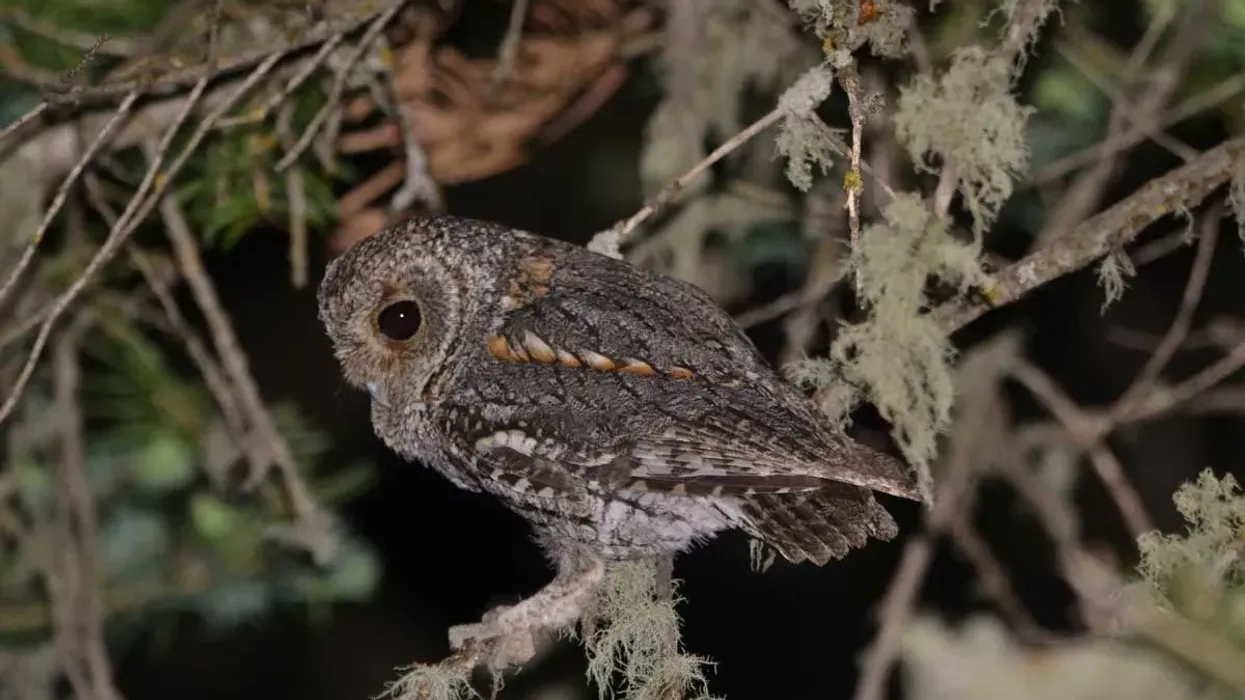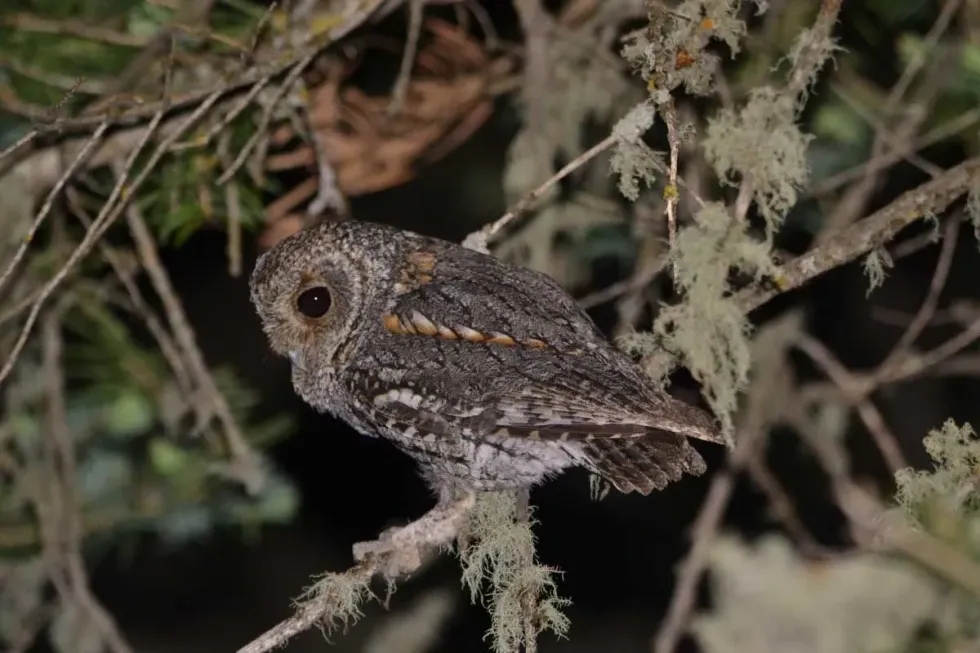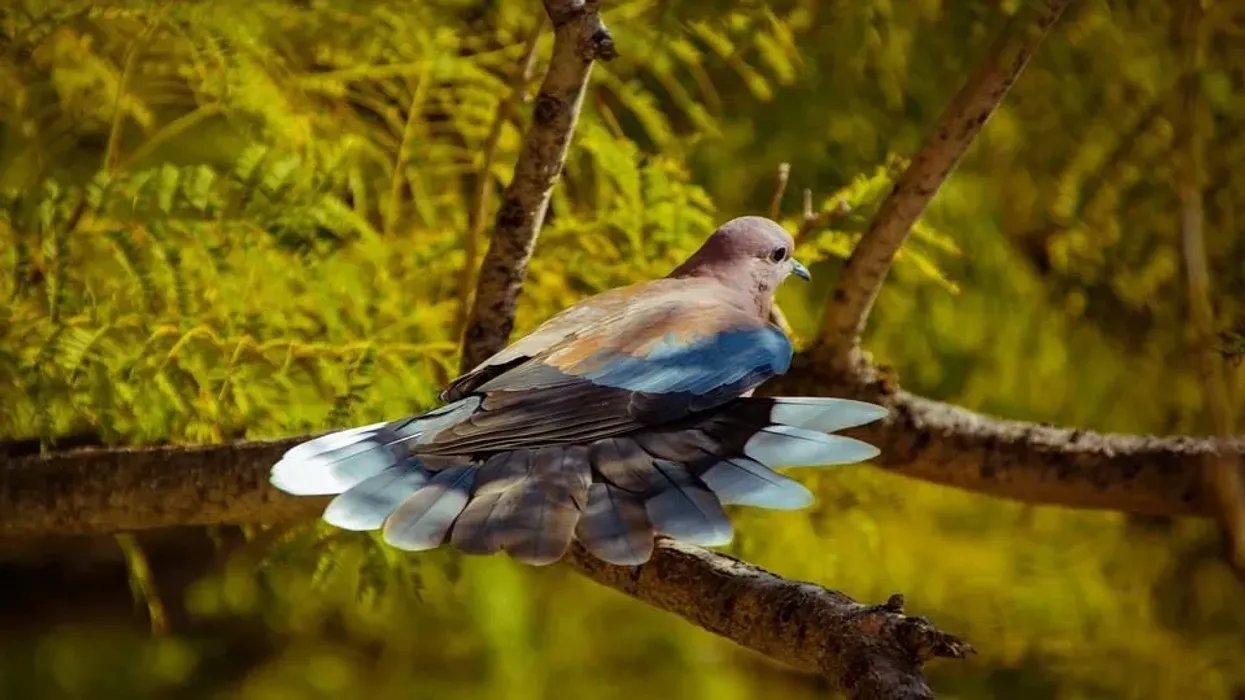Exotic coloring and small, round heads make these owls one of the cutest owl species out there. They are small yet equally as fierce as their bigger family members.
They have dark reddish-brown and gray feathers that help them to stay camouflaged, making them one of the rarest owl species ever. They have a very small body, but their wingspan is more than twice the size of their length.
They are fascinating to watch for their fascinating colors, but witnessing them in flight just might take your breath away. Unfortunately, these creatures are facing a decline in population due to habitat loss.
There are many interesting facts about this fascinating creature. Want to know about them? we suggest you keep reading on. If you like reading fun animal facts, please check out our similar articles about peacock bass and northern spotted owl.
Flammulated Owl Interesting Facts
What type of animal is a flammulated owl?
A flammulated owl is a type of small owl, known as such because of the flame-like markings on its face. Their very small size and exotic coloring keep them well camouflaged in pine forests which is their natural habitat.
What class of animal does a flammulated owl belong to?
Like all other owls, this species of owls are birds of prey. They are known to stay perched on top of Ponderosa pine trees, and Douglas fir trees while foraging for prey.
These owls are found throughout North America, the western United States, central Mexico, and the southern part of British Columbia during the breeding season. In the winter, they migrate from their breeding grounds to Central America, California, south Texas, and Arizona, and southern Mexico, El Salvador, and Guatemala.
How many flammulated owls are there in the world?
It is hard to say just how many flammulated owls are left in the wild but their population seems to be on a decline. Experts think that there are around 5,500 breeding populations left around the world. Breeding pairs are known to nest in abandoned woodpecker holes situated in tree cavities to lay eggs.
Where does a flammulated owl live?
These birds live exclusively in the forests of Mexico and throughout Central, South, and North America.
What is a flammulated owl's habitat?
These nocturnal creatures are known for nesting in natural tree cavities or woodpecker holes, depending on the availability.
Who do flammulated owls live with?
Flammulated owls are known to live with their mates, and they even hunt for prey in pairs. During the breeding season, when the females are incubating the eggs, male owls are solely responsible for feeding the females as well as the young once the eggs have hatched.
These North American birds are known for nesting exclusively in tree cavities in pine forests and due to their dark brown and gray coloration, they are pretty hard to spot.
How long does a flammulated owl live?
This species of owl are known to live for about six to eight years on average. Their camouflage gives them an advantage in preventing predators from finding and hunting them.
These owls are known to nest exclusively in the cavities of trees which makes it very easy for them to hide. Even though they are hard to spot, their deep hoots are very unique and different from other owl species.
How do they reproduce?
Flammulated owls are known to nest exclusively in the cavities of trees, and breeding pairs often look for a nest between breeding clusters. The mating season goes on from April to July, and the eggs are laid around the same time.
Females lay about one to five eggs on average depending on the location and availability of food sources. The incubation period goes on for 21 to 24 days, and females are solely responsible for incubating them.
Males are dependent on this time duration to bring food for the females.
After the eggs are hatched, it takes about 25 to 32 days for the young to become independent. The young are known to fledge between 30 to 35 days, after which they start flying with their parents, but they never stray more than 100 yd (91 m) from their nesting site.
What is their conservation status?
Flammulated owls are enlisted on the IUCN Red List as a species of Least Concern, but their population is decreasing due to various reasons. One of the major reasons is thought to be habitat loss due to deforestation for agricultural purposes.
It is very concerning because these owls are known to inhabit exclusively Ponderosa pine tree and Douglas fir tree-filled forest regions. Hopefully, their population will soon recover from this loss and thrive again as the loss of these owls could cause serious repercussions for the ecosystem.
Flammulated Owl Fun Facts
What do flammulated owls look like?
Flammulated owls have a big, round head that is gray with reddish-brown peppering. They also have a rusty reddish streak along their shoulder and back that earned them the name flammulated owls. The feathers on their body are mostly gray or reddish-brown depending on the location.
Flammulated owls from the Great Basin have the coarsest markings among this species. Their ear tufts are so small that it is not even visible sometimes. Their eyes are dark-colored and their bills are a bluish-gray color.
The young are mostly grayish with a dull or grayish-white underpart. These owls have one of the most unique descriptions of colors throughout their bodies for such small owls. There is no noticeable sexual dimorphism found in the otus flammeolus population, but female birds tend to be heavier than males.

How cute are they?
These birds have one of the most unique descriptions of colors among owls. Similar in size to screech owls, they are very cute with their exotic colors, round heads, and small ear tufts.
How do they communicate?
Like all owls, these birds also have a range of different calls through which they communicate. It has a distinctive deep sound that is unique. Females have a higher-pitched call than males.
How big is a flammulated owl?
These birds from Central, South, and North America are small, rarely growing over 5-6 in (12.7-15.2 cm), which is about the same size as a vinegaroon.
How fast can a flammulated owl fly?
It is hard to say just how fast these birds can fly, but as they have a wingspan that is more than twice the size of their bodies, it can be assumed that their wings help them to fly quite fast.
How much does a flammulated owl weigh?
These dark-colored birds are small and do not weigh much. On average they weigh about 0.11-0.14 lb (50-65 g).
What are the male and female names of the species?
Flammulated owls do not have gender-specific names for their male and female counterparts. A female bird is called a female flammulated owl while a male bird is called a male flammulated owl. There is no visible sexual dimorphism found between the males and females, but females tend to have a higher-pitched call than male owls.
What would you call a baby flammulated owl?
A baby flammulated owl is called a hatchling just after hatching, and after that, it is called a young owl.
What do they eat?
These owls are known to mostly eat insects, such as moths, crickets, and beetles. Occasionally these birds have also been known to eat small mammals like rodents during the winter months when insects are scarce.
Female flammulated owls are known to lay about one to give eggs depending on the nest and the habitat.
During the incubation period, male birds are solely depended on for finding and bringing food to female birds. They sit perched on the top of Ponderosa pine and fir trees in the forests and visually locate their prey and then fly out to capture their food from branches or forest grounds.
Are they dangerous?
Birds of prey always possess some sort of danger, mainly because of their unpredictable nature, and flammulated owls are no different. However, these species of birds live deep in the forests and are very small, so they are more or less in danger from us than the other way around.
Would they make a good pet?
Flammulated owls are messy eaters who need whole animals in their diet, and this is a hectic task to provide them with raw meat every day. Also, this species strictly lives and nests in forests, so a drastic change of habitat might make them more aggressive. Keeping flammulated owls as pets is not recommended at all.
Did you know...
These exotic owls have a wingspan that is more than twice their body size.
What does flammulated mean?
The word 'flammulated' comes from the Latin word 'flammula', and it means 'having a plumage that is flame-colored'. A flammulated owl has a streak of rustic red feathers along their shoulder and back which earned them this name.
What is the wingspan of a flammulated owl?
For such a small owl species, they have a wingspan of about 14 in (36 cm), which is more than twice their body size.
Here at Kidadl, we have carefully created lots of interesting family-friendly animal facts for everyone to discover! Learn more about some other birds including yellow warbler, or chaffinch.
You can even occupy yourself at home by drawing one on our Flammulated owl coloring pages.










